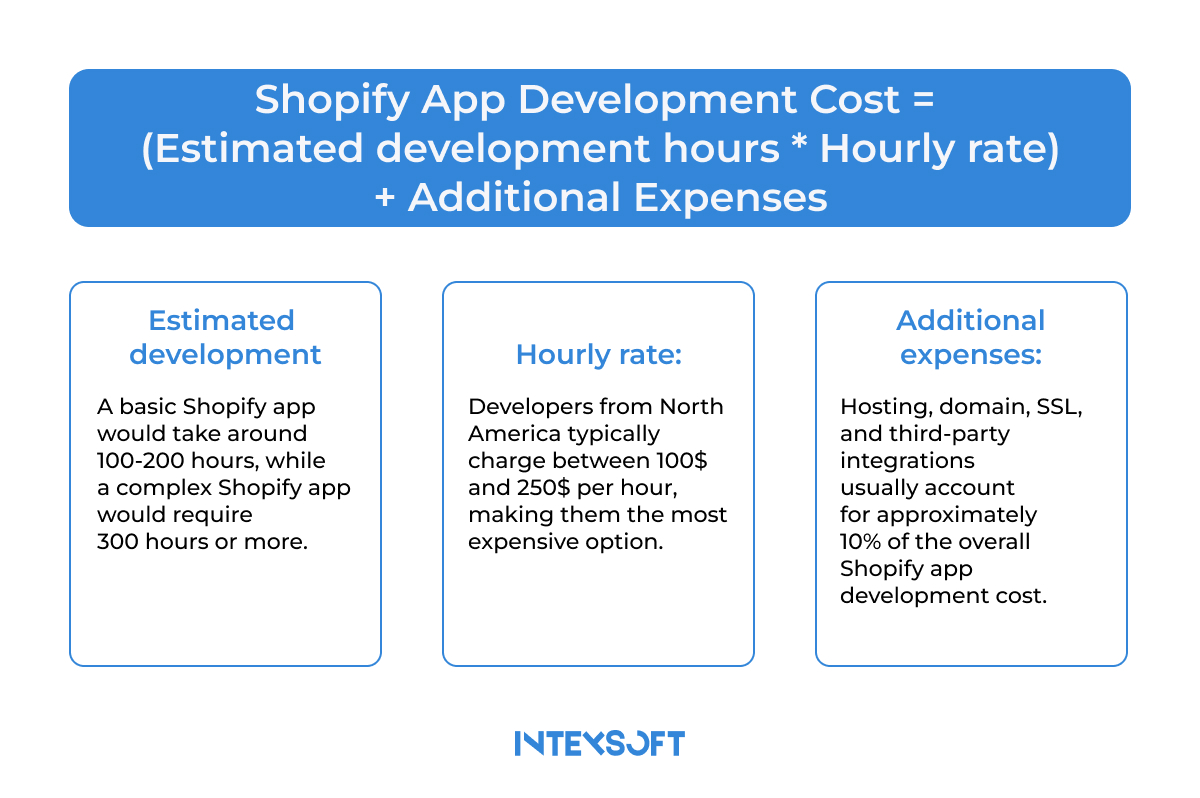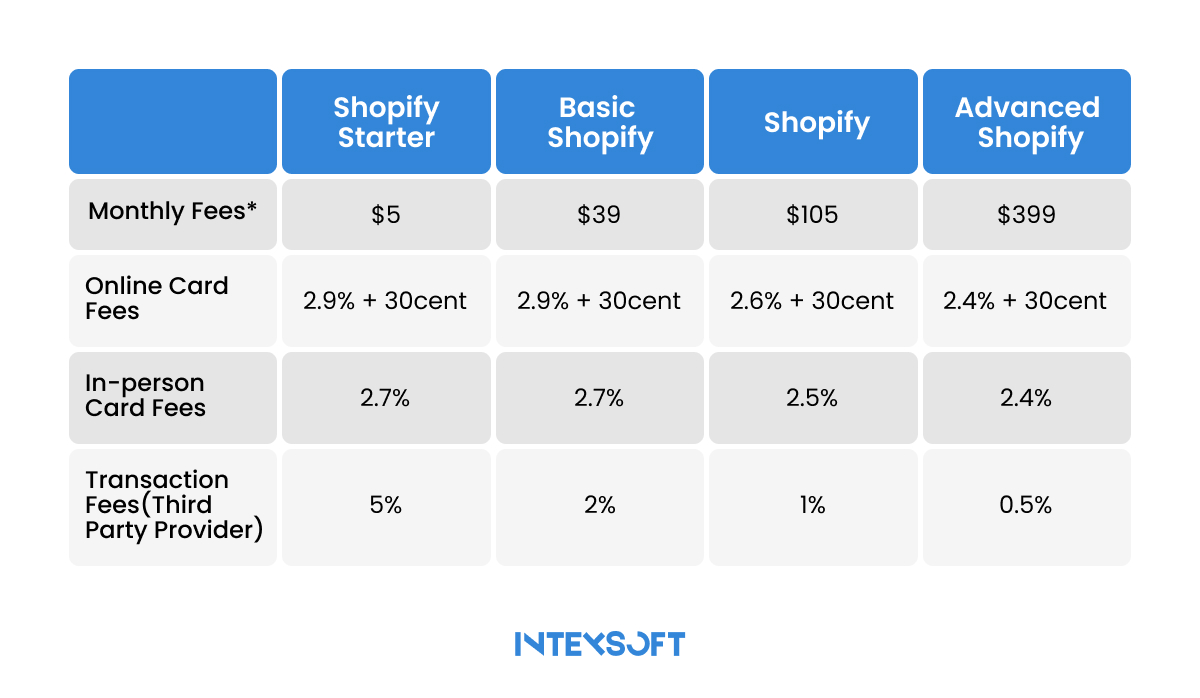
How much is a Shopify website? This article offers recent information for businesses to anticipate and plan for development expenses. From determining Shopify store development costs to exploring key factors influencing pricing, the article provides a comprehensive guide for business owners.
Reading time: 18 min.
Determining the cost of your Shopify website involves looking at several important factors. These include how complex your design is, what functionalities you need, the size of your ecommerce operations, any custom development work required, how responsive your site needs to be, incorporating SEO strategies, integrating marketing tools, creating content, and ongoing maintenance and support.

It’s important to work with experienced Shopify developers to get a clear picture of what your Shopify website will cost. They can help you understand these factors better and accurately assess the financial investment needed to build and maintain your online store. Investing in the right expertise upfront can save you time and money in the long run and ensure your store’s success.
This article by IntexSoft is designed to help you fully comprehend your situation. Let’s start exploring these aspects together.
Here is a simplified table breaks down Shopify app development’s key stages and costs.
Cost components and stages of Shopify app development
| Stage | Cost Components | Description |
| Planning and Discovery | Consulting fees, market research expenses, design prototypes. | Define project objectives, gather requirements, conduct market research, and create wireframes or prototypes. |
| Design and UI/UX Development | Graphic design services, UI prototyping, usability testing. | Design the app’s user interface, incorporate visual elements, optimize navigation, and ensure a seamless user experience. |
| Development and Coding | Hiring developers, backend/frontend coding, API integrations. | Build the app’s functionality, features, and integrations, ensuring cross-platform compatibility. |
| Quality Assurance and Testing | QA engineers, testing (unit, integration, UAT), bug fixing. | Conduct comprehensive testing to evaluate functionality, performance, usability, security, and compatibility. Identify and fix bugs to meet quality standards. |
| Deployment and Launch | App store fees, deployment tools, marketing materials preparation. | Prepare the app for deployment, configure app store submission, and conduct beta testing for a smooth launch. |
| Post-Launch Support | Technical support, error fixes, and feature enhancements (including security). | Provide ongoing support, maintenance, updates, and enhancements to ensure app functionality and user satisfaction. |
| Marketing and Promotion | Advertising campaigns, social media marketing, ASO. | Promote the app to attract users, increase visibility, and drive downloads and usage through marketing strategies. |
The cost of Shopify store can vary significantly due to several different plans. Business owners can choose the one that suits their needs best. To determine which solution will help you thrive, review the table below:
Shopify plans comparison
| Plan | Price (per month) | Suit for | Features |
| Shopify Starter | 5$ | For individual business owners | Selling products through messaging apps and social media, or set up a straightforward online store. |
| Basic Shopify | 24$ | For individual business owners | – 10 inventory locations – Around-the-clock chat assistance – Regionalized worldwide sales – Basic POS system |
| Shopify | 69$ | For modest-sized teams | – 10 inventory sites – Round-the-clock chat assistance – Sales across 3 markets – Access for 5 extra staff accounts – Streamlined POS Lite functionality |
| Advanced Shopify | 299$ | As your store expands | – Customized reports and analytics – Expanded inventory across 10 locations – Upgraded round-the-clock chat assistance – Tailored global sales in 3 markets, with the option to add more markets for $59 USD per month each – Access for 15 extra staff accounts Increased checkout capacity by 10 times – Streamlined POS Lite functionality |
| Shopify Plus | 2 300$ | For businesses with greater complexity | – Tailored analytics and reporting features – Extensive inventory management across 200 locations – Exclusive priority support via phone – Targeted global sales coverage spanning 50 markets – Unrestricted staff account access – Fully adaptable checkout process with 40 times the capacity – Advanced POS Pro functionality across 200 locations, integrated with Shopify Payments – Opportunity to engage in wholesale and B2B selling |
As you can see, Shopify offers a range of plans tailored to multiple business needs, from startups to enterprise-level operations. While each plan meets certain expectations, the surprises lie in the additional features and benefits that go beyond what you might anticipate. This framework encourages online store owners to achieve thoroughly and discover how they can exceed their eommerce goals.
This is the cheapest Shopify plan. But consider that Starter has a transaction fee of 5%, which is slightly higher than the fees in Shopify’s standalone site plans.
These transaction levies become a paramount factor for enterprises boasting substantial online sales volume. In such cases, transitioning to one of Shopify’s elevated-tier plans would present a more economically viable choice.
This plan emerges as a wise choice for small enterprises seeking an expansive online storefront integrated with versatile selling options. This plan embodies an online retail hub comprising a website and a blog, facilitating the display of an infinite array of products while enabling sales across online marketplaces and social media platforms.
Moreover, the Shopify Basic plan extends solutions for businesses inclined toward seamless in-store transactions, incorporating card reader functionalities to expedite payment procedures.
This Shopify package enhances your online store by adding more features on top of the Basic tier. It includes performance analytics, up to five staff accounts, and strong support for gift card purchases, giving you a complete set of tools to improve your business operations.
You can also boost your competitiveness with the abandoned cart recovery tool, which helps recover potential lost sales and increase revenue opportunities. Moreover, you can tap into international markets using country-specific domains and easy currency conversions, expanding your customer base globally.
This option caters to enterprises that require advanced functionalities for substantial online and in-person sales. Offering unlimited storage, up to 15 staff accounts, and third-party calculated shipping rates, this plan is tailored for high-volume traffic scenarios. Users can leverage customized reporting features and e-commerce automation tools for streamlined operations.
Remarkably, this plan boasts the lowest fees among all the others, ensuring cost-effectiveness for businesses with significant transaction volumes.
Due to its substantial costs, Shopify Plus transcends a mere top-tier standard Shopify plan. It’s tailored for enterprise-level sellers who not only possess the financial resources but also require an elevated level of support and functionality. Therefore, if your annual revenue doesn’t reach millions of dollars, stick with a traditional Shopify plan until your business grows to that level.

How much does shopify take per sale?
Now that you have thoroughly understood Shopify plan comparison and potential fees, you may determine that your business requires additional features. Add-ons or premium themes are available, but they come at a cost. By opting for these, you’ll pay a fee but leverage access to unique features that competitors may not offer.
Shopify website design cost with premium themes typically starts at 300$ and can vary depending on your specific needs. It’s essential to assess whether these features are truly necessary for your business.
Several other ubiquities costs are associated with using Shopify. Here are a few examples:
When preparing to create your Shopify app, the cost aspect is just one piece of the puzzle. Apart from estimating development expenses, you must also define the store’s feature set comprehensively. Business owners must have a deep understanding of their market competition and choose a development partner with proven expertise in Shopify—a partner who is aligned with your vision.
Avoid making decisions solely based on cost or location; prioritize experience and reliability instead. Ensure the chosen team understands your industry nuances and won’t surprise you with hidden fees. Consider contacting multiple agencies to compare services and find the best fit for your project. This strategic approach will lead to a more successful and cost-effective online store development journey.
If you need more information and advice tailored to your specific business situation, IntexSoft experts are always available to consult. Contact us anytime to ensure our team develops an online store to compete effectively against competitors.
Several plans are available, and their costs may vary significantly. The Starter plan starts at 5$ per month, while the advanced version starts at 299$. The most premium plan is priced at $2,300. Additionally, transaction fees range from 0.5% to 3%, and the final price depends on the type of transaction.
After the 3-month trial period of $1, you’ll need to choose one of Shopify’s plans. The monthly fees for these plans range from $29 to $2,300 per month, depending on the specific plan you select. Additionally, transaction fees apply based on the type of transaction and the plan you’re using.
The first factor that impacts fees is the selected plan. Some plans incur a fee of 2.6% + $0.30, while a more advanced plan costs 2.4% + $0.30.
Shopify has recently announced a substantial 25% increase in Plus plan, raising the monthly cost to $2,500. This strategic move will likely prompt businesses to reassess their financial strategies and consider potential cost-saving measures, which could have far-reaching implications for the broader Shopify app ecosystem.